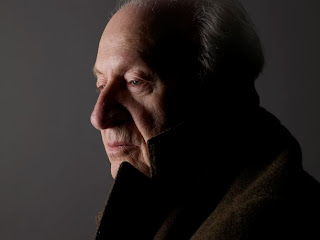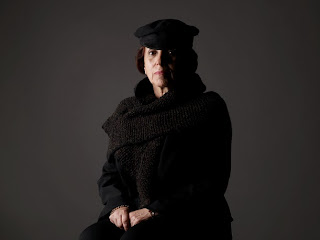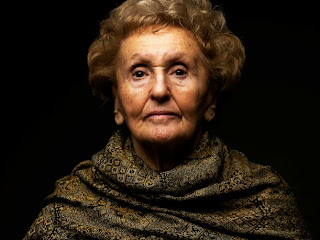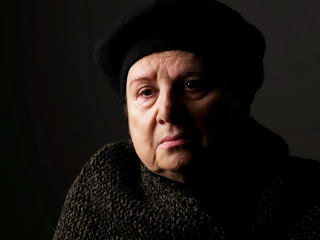 On October 7th,1944, at a line-up around three in the afternoon, a revolt in the Auschwitz concentration camp began with the swing of a hammer and a shout of “Hurrah!” from Chaim Neuhof, who had been a Sonderkommando – one of the prisoners selected to work in the gas chambers and crematoria – since 1942. The remaining Sonderkommando followed and assisted Neuhof in attacking the SS guards with hammers and axes that were smuggled in with the help of local partisans. An especially sadistic SS guard was thrown into the ovens after being stabbed - but still alive.
On October 7th,1944, at a line-up around three in the afternoon, a revolt in the Auschwitz concentration camp began with the swing of a hammer and a shout of “Hurrah!” from Chaim Neuhof, who had been a Sonderkommando – one of the prisoners selected to work in the gas chambers and crematoria – since 1942. The remaining Sonderkommando followed and assisted Neuhof in attacking the SS guards with hammers and axes that were smuggled in with the help of local partisans. An especially sadistic SS guard was thrown into the ovens after being stabbed - but still alive.SS guards were quickly alerted about the revolt and, easily outnumbering the prisoners, opened fire on the insufficiently armed Sonderkommando. But the prisoners, who had also smuggled small guns into camp through connections with local partisan groups, were not easily defeated. After strapping explosives to captured guards, a group of prisoners blew up Crematorium IV, killing themselves and their captors. Some of the prisoners cut through the barbed-wire fence, creating a crucial escape route out of the camp.
The revolt was work of the prisoners in the 12th Sonderkommando – young, able-bodied men who were given the grisly task of working in and around the gas chambers. They escorted newly arrived prisoners to their deaths, searched the bodies for valuables, and disposed of them in the crematoria. For performing these duties, they were reviled by the rest of the camp’s prisoners. Furthermore, their knowledge of the inner workings of the camp marked them for certain death. Every few months, SS guards killed the old Sonderkommando and replaced them with new prisoners. Though the 12th Sonderkommando learned of their pending liquidation from the camp's underground military leaders only earlier that day, the revolt had been planned months earlier.
Four women working inside the camp, Ester Wajcblum, Regina Safirsztain, Ala Gertner and Roza Robota, played a crucial role in this revolt. These four female prisoners provided ammunition for blowing up Crematorium IV – Wajcblum smuggled out the gunpowder from the munitions factory, where she worked along with Safirsztain and Gertner. Robota, who worked in a clothes depot adjacent to one of the crematoria, helped smuggle out the powder. The men in the camp's resistance underground recruited Robota because they were acquainted with her from their hometown, where she was a member of the HaShomer HaTzair Zionist youth movement. Through a complex communication network, she and the other women were able to slowly pass on the ammunition to the Sonderkommando leaders by hiding it in the false bottom of a food tray. This powder was used to manufacture crude explosives and primitive grenades for the attack.
Despite the extensive preparation of the prisoners, the revolt was quickly subdued by the SS guards, whose superior automatic weapons were no match for the prisoners’ arsenal. The Nazis rounded up all the escapees. Another two hundred prisoners were lined up and executed as punishment for the revolt. One of the Sonderkommando revealed the names of the four women responsible for smuggling in the gunpowder - but despite months of torture, the women refused to reveal any other accomplices. On January 5, 1945, they were all hanged in front of the entire female camp population. “Be strong and be brave,” Robota shouted defiantly to her comrades as the trapdoor dropped.
This was the last public execution in Auschwitz – twelve days later, the camp was deserted as 56,000 prisoners were forced on a death march by the Nazis in a last attempt to destroy any evidence of their mass killings. On January 27th, the 7,500 remaining prisoners were liberated by the Soviet army.
Click here to learn more about women who participated in resistance against the Nazis.

.jpg)





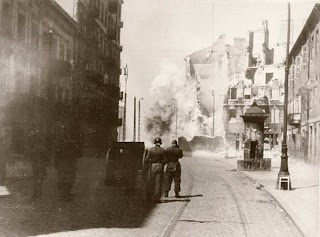




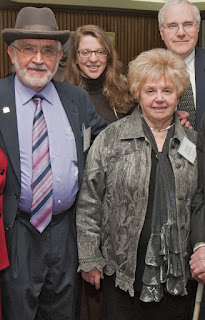






 Joseph Greenblatt was born in Warsaw in 1915. He learned about resistance from his father, an army captain who had fought for Polish independence during WWI. At eighteen, Joe enlisted in the Polish army as an infantryman, becoming an officer in 1938. In 1939 he was mobilized and sent to the Polish-German border. He witnessed the German invasion directly and fought for almost twenty days before being taken prisoner and sent to a German POW camp. It was in the camp that he began to establish connections with the newly formed Armia Krajowa (AK). The AK hijacked a German truck, transporting Joe to a hospital, freeing him and his fellow prisoners.
Joseph Greenblatt was born in Warsaw in 1915. He learned about resistance from his father, an army captain who had fought for Polish independence during WWI. At eighteen, Joe enlisted in the Polish army as an infantryman, becoming an officer in 1938. In 1939 he was mobilized and sent to the Polish-German border. He witnessed the German invasion directly and fought for almost twenty days before being taken prisoner and sent to a German POW camp. It was in the camp that he began to establish connections with the newly formed Armia Krajowa (AK). The AK hijacked a German truck, transporting Joe to a hospital, freeing him and his fellow prisoners.
